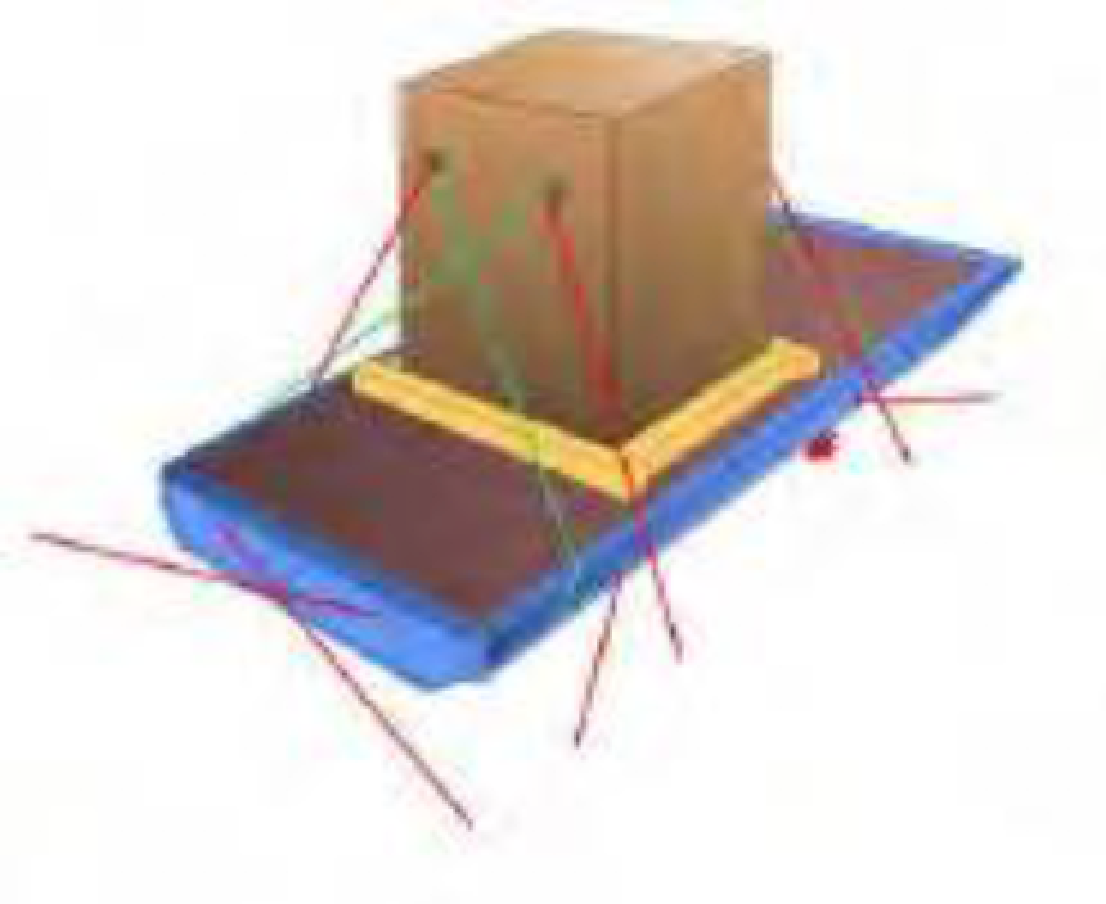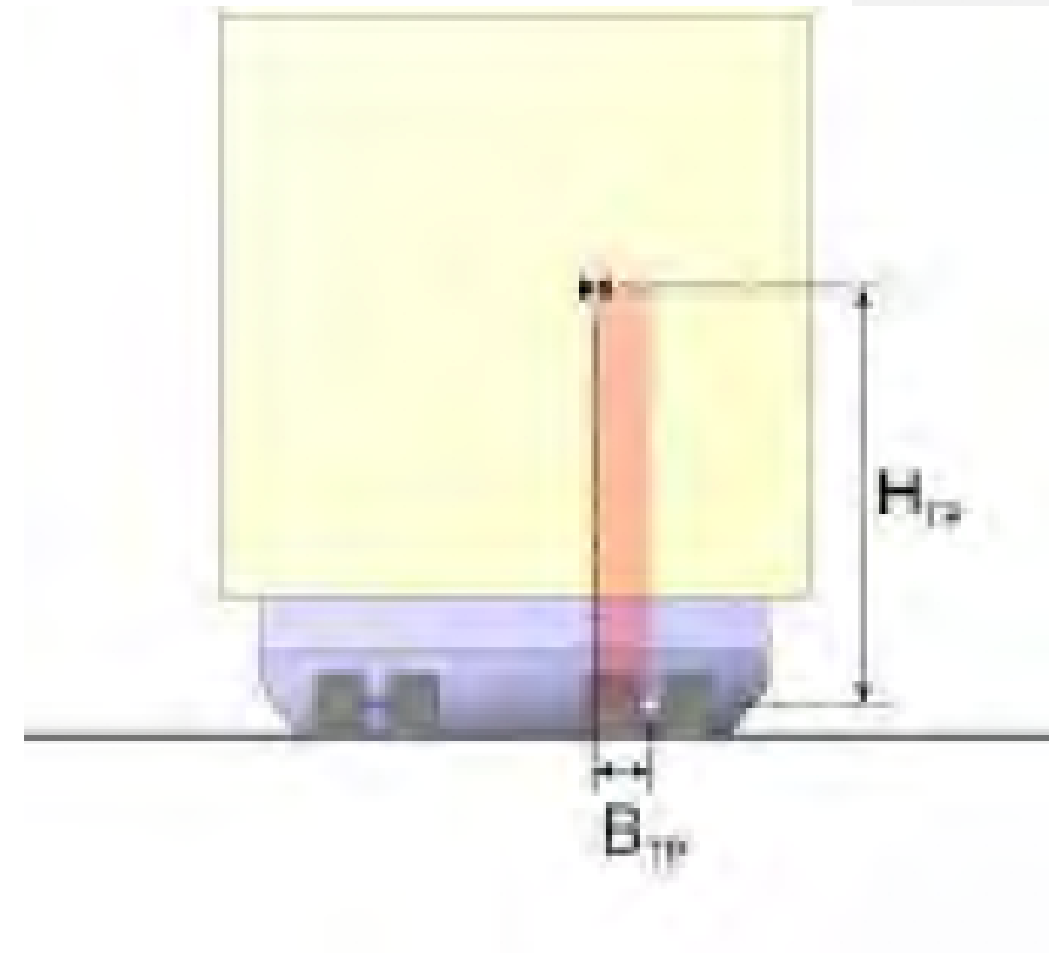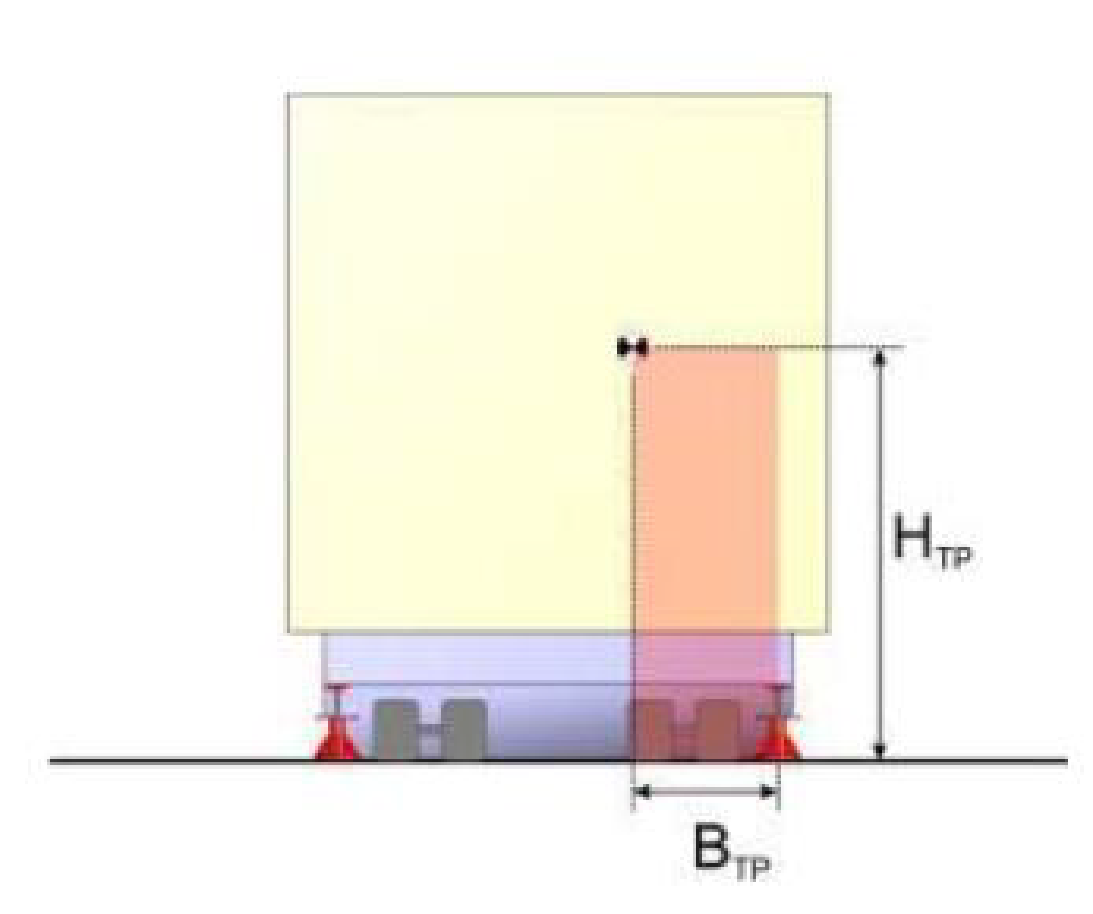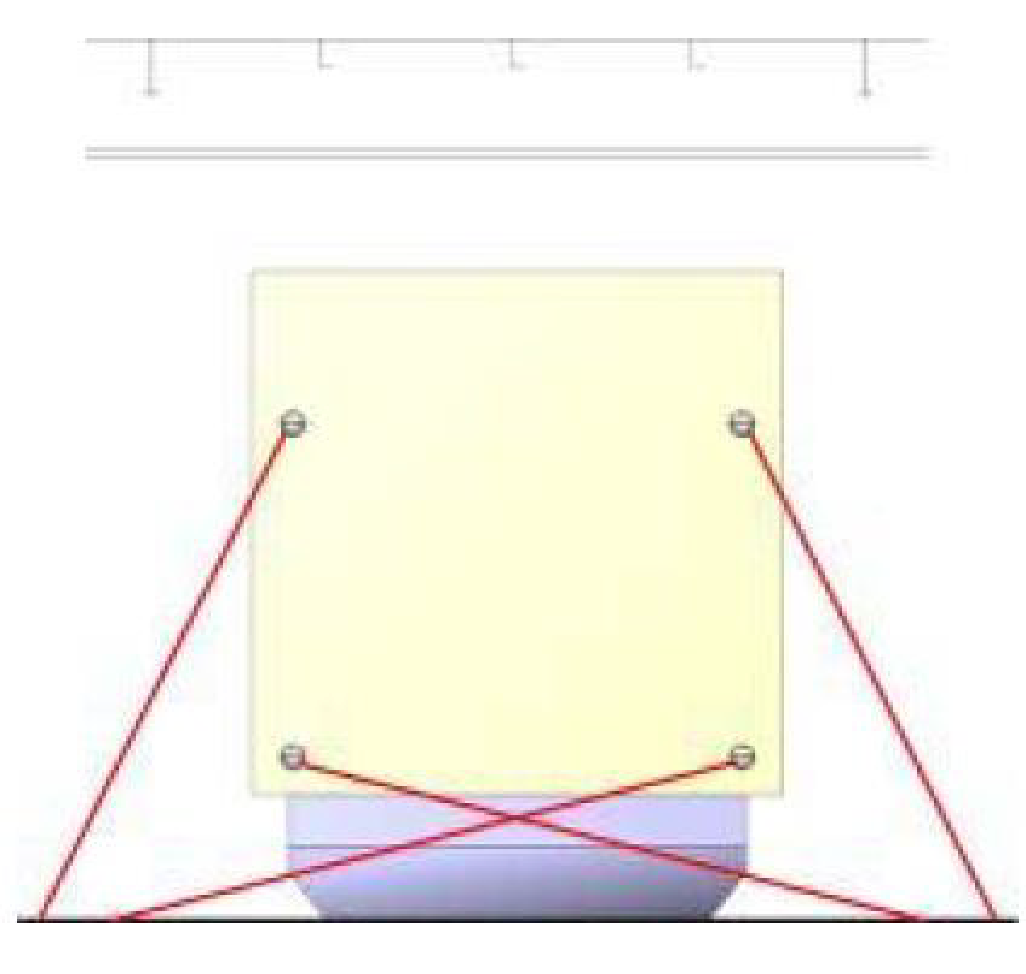For heavy project cargoes stowed on roll trailer or other cargo transport units, lashings should as far as possible be drawn from the goods to the vessel's deck and not only from the roll trailer to the vessel's deck.


Since the support width in the forward end is larger than in the wheel end, the tipping risk of the roll trailer is increasing by the amount of load placed on the wheel end of the unit.
To investigate if there is a risk of tipping of a unit, the vertical distance from the tipping point to the Centre of Gravity (CoG), Htp must be compared to the horizontal distance from the tipping point to CoG, Btp.
There is a risk of transverse tipping on main deck or below on board the OPERATORS vessels if:
HTP/BTP ≥ 1.5
HTP: Height above deck transversal position.
BTP: Bottom transversal position.
This is valid for transverse accelerations below 6,65 m/ s2 (0,68 g).
When there is a risk of tipping the number of lashings preventing tipping must be increased. Alternatively, supporting jacks or timber can be used

By using jacks, the tipping point is changed and thereby the relation (Htp/Btp) is reduced.
On roll trailer the supporting jacks or timber should be placed in the wheel end.
Securing points on the goods should be used as much as possible to prevent sliding and tipping of the entire unit when stowed on board the vessels.

The arrangement shown in this sketch is efficient for preventing both transverse sliding and tipping.
The best effect of lashings to prevent tipping is obtained by a lashing drawn in a strait angle towards the largest lever arm to the tipping point.
In reality, it is seldom possible to place the lashing in this direction.
If, owing to circumstances, lashings can be set at large vertical angles only, sliding must be prevented by timber shoring, welded fittings, or other appropriate means.
